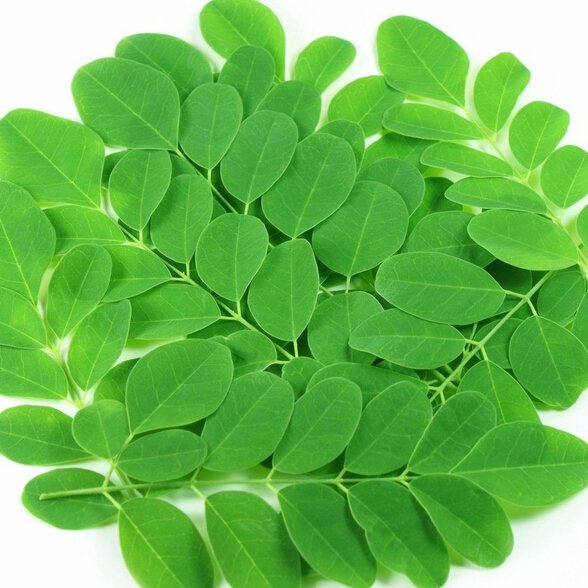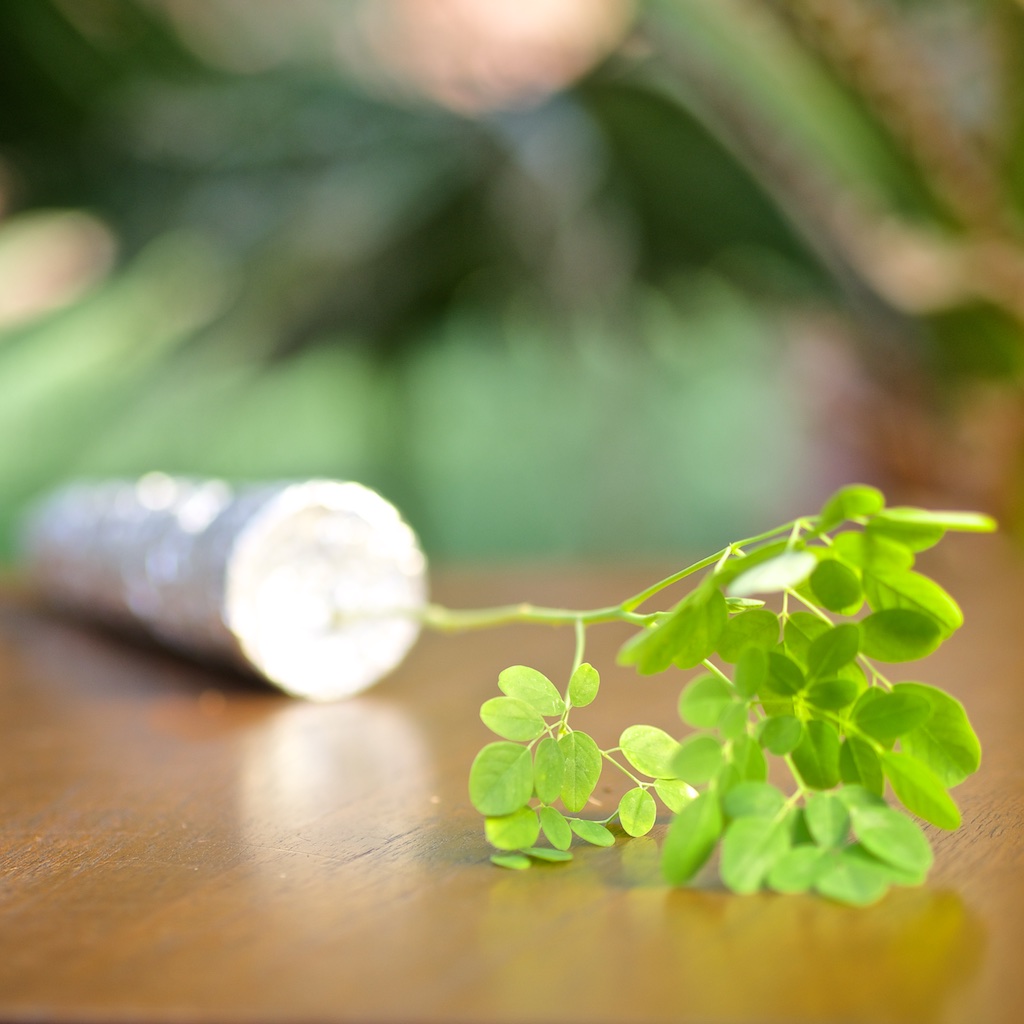The Moringa plant is native to India, where it was first described around 2000 BC as a medicinal herb. This herb, also known as “The Miracle Tree” or the “Ben Oil Tree”, is mostly cultivated as the Moringa Oleifera species, a multipurpose tree grown on the foothills of the Himalayas in Northwest India, with roots in Pakistan, Bangladesh, and Afghanistan. Moringa Stenopetala, an African species, is also widely grown. This plant spread eastward from India to the lower parts of China, Southeast Asia and the Philippines. It also spread westward to Egypt, the Horn of Africa, around the Mediterranean, and finally to West Indies in America.

Ancient civilisations quickly discovered that the tree provided many medicinal benefits, most notably an energy boost. Those who used Moringa found themselves experiencing high amounts of energy when compared to others, and it was believed to have many medicinal properties as well. The Romans, Greeks and Egyptians extracted edible oil from the seeds and used it as perfume and skin lotion. Ancient Egyptians treasured Moringa oil, using it as protection for their skin from the ravages of desert weather.
In 326 BC Alexander the Great was defeated by an unsuspecting group of men — the Maurian warriors. The Ancient Maurian warriors of India drank the leaf extract of Moringa as their daily staple and on the war-front. These men were known to be “men of stamina and valour”. Not only did Moringa give them the needed strength as warriors, it was a stress reliever and numbed pain.
Roman historians recorded that these warriors needed less sleep and hardly got sick. They repeatedly pounced on Alexander’s armies in over 60 battles in a span of two years. At age 29, Alexander had conquered most of the known world, creating the greatest empire it had ever seen. His unstoppable conquests ended with the Moringa tea drinking warriors of India.
In the 19th century, plantations of Moringa in the West Indies exported the oil to Europe for perfumes and lubricants for machinery. The seeds themselves have been found to be useful in water purification, thus today moringa is cultivated around the world, primarily in poorer regions with harsh climates to purify water and combat malnutrition. Countries such as Ethiopia, Haiti, Ghana, Honduras, Indonesia and Uganda take advantage of the nourishing properties of this amazing plant.
Moringa Benefits
Moringa Oleifera is a tropical plant with an extremely high nutritional content. Because of its near perfect combination of vitamins and protein, it has been labelled a super food, and a miracle tree. Each different part of the Moringa tree, be it the fruits, seeds, leaves, flowers, bark and roots, all contain beneficial nutrients.
In Ayurvedic Medicine, moringa has been mentioned as a cure for over 300 diseases ranging in severity from minor skin blemishes to more serious illnesses like asthma, high blood pressure, heart disease, ulcers, kidney stones, as well as respiratory illnesses like tuberculosis. Research from several different countries prove that Moringa powder has some of these health benefits that were well-known many years ago.
Highly Nutritious
· While all parts of the tree are edible, the highest nutritional value comes from consuming the leaves.
· Moringa leaves contain high amounts of antioxidants, vitamins A, B, C, E, protein, including all the basic amino acids, phytonutrients, calcium, iron, potassium, zinc, and omega 3, 6, 9:
o At least twice the protein than in milk
o Half the protein than in egg
o More iron than in beef
o Seven times more vitamin C than in oranges
o Four times more vitamin A than in carrots
o Four times more calcium than in milk
o Three times more potassium than in bananas
o Two times more protein than in yoghurt
· When the leaves are boiled it has three times more bioavailable iron than the raw leaves.
· The leaves are a great advantage for people who do not get protein from animal source such as milk and egg. It also contains arginine and histidine, the two amino acids especially important for infants.
· Used as a food supplement and successfully used to help treat malnutrition.
Water Purifier
· Powdered moringa seeds are best known for its use in attracting contaminants to purify drinking water.
· Once the oil is extracted from the seeds by cold pressing, the leftover pressed cake contains a very high level of protein.
· Some of these proteins are active cationic proteins, which cause impurities in the water to clump together. This is achieved by grinding the seeds to a powder which is mixed with the dirty water, and then filtered through a piece of woven fabric to obtain pure water.
· Alternatively, a cloth containing the seed powder is suspended in water, generally overnight, to coagulate impurities. The cloth containing the seeds is then removed, and the purified water is decanted leaving behind the coagulated particles on the bottom.
· The cationic proteins neutralise the colloids in muddy or dirty water and up to 99% of colloids can be removed.
· Only one seed is required per litre for slightly contaminated water and two seeds for very dirty water.
· This protein can also be used for cleaning vegetable oil, or for sedimenting fibres in juice.
· Both Egypt and Sudan have effectively used moringa seeds for cleaning water from the Nile specifically for human consumption.
Improves Skin Health
· Moringa contains natural antibacterial, antifungal and antiviral compounds that protect the skin from various forms of infections.
· Some of the common ways moringa is used on the skin include: reducing athlete’s foot, eliminating odours, reducing inflammation associated with acne breakouts, treating pockets of infection or abscesses, getting rid of dandruff, fighting gum disease (gingivitis), and helping heal bites, burns, viral warts and wounds.
· Moringa oil is applied directly to the skin as a drying, astringent agent used to kill bacteria, but at the same time when used regularly it’s known to act like a lubricant and hydrate the skin by restoring its natural moisture barrier.
· It’s a common ingredient used in food manufacturing and perfumes because it prevents spoilage by killing bacteria, plus it has a pleasant smell and reduces odours.
Anti-Aging
· Moringa leaves are high in several anti-aging compounds that lower the effects of oxidative stress and inflammation, including polyphenols, vitamin C, beta-carotene, quercetin, and chlorogenic acid.
· These are also associated with a reduced risk for chronic diseases, such as stomach, lung or colon cancer; diabetes; hypertension; and age-related eye disorders.
Balances Blood Sugar Levels
· Moringa contains a type of acid called chlorogenic acid, which has been shown to help control blood sugar levels and allow cells to take up or release glucose (sugar) as needed. This gives moringa natural anti-diabetic and hormone-balancing properties.
· Moringa contains compounds called isothiocyanates that have also been connected to natural protection against diabetes.
Other Uses
· Anti- Inflammatory- According to a report published in the Asian Pacific Journal of Cancer Prevention, moringa contains a mix of compounds that work in the same way as many anti-inflammatory drugs.
· Cholesterol lowering- Moringa oleifera has been found to lower cholesterol levels in the blood, which would lead to reduced risk of heart disease.
· Protecting the liver- Moringa appears to protect the liver against damage caused by anti-tubercular drugs and can quicken its repair process.
· Cancer- Moringa extracts contain properties that might help prevent cancer developing. It also contains niazimicin, which is a compound that suppresses the development of cancer cells. Moringa was found to have a group of unique compounds containing sugar and rhamnose, which are uncommon sugar-modified glucosinolates. These compounds were reported to demonstrate certain chemopreventive activity, by inducing apoptosis.
· Digestive Aid- Moringa extracts might help treat some stomach disorders, such as constipation, gastritis, and ulcerative colitis. The antibiotic and antibacterial properties of moringa may help inhibit the growth of various pathogens, and its high vitamin B content helps with digestion.
· Anti-bacterial- Due to its antibacterial, antifungal, and antimicrobial properties, moringa extracts might combat infections caused by Salmonella, Rhizopus, and E. coli.
· Strengthens bones- Moringa also contains calcium and phosphorous, which help keep bones healthy and strong. Along with its anti-inflammatory properties moringa extract might help to treat conditions such as arthritis and may also heal damaged bones.
· Mood Enhancer- As a high protein food and a rich source of the amino acid tryptophan, moringa benefits neurotransmitter functions, including those that produce the “feel good” hormone serotonin. Moringa is thought to be helpful in treating depression, anxiety, and fatigue.
· Thyroid Health- Moringa is rich in antioxidants and compounds that improve thyroid health, which makes it beneficial for maintaining high energy levels plus fighting fatigue, depression, low libido, moods swings and insomnia.
Recipes for Health
The most common forms of moringa are dried moringa leaves or powder, moringa tea, moringa seeds, and moringa oil.
Moringa leavesare commonly used to brew tea by steeping the dried, preserved leaves in hot water, which releases their special chemical compounds — very similarly to how green tea is made. Young moringa leaves are edible and are commonly cooked and eaten like spinach or used to make soups and salads. The leaves can be consumed either in raw, cooked or dried over a screen for several days and ground into a fine powder that can be added to almost any food as a nutrient supplement such as cereals and drinks to improve their nutritive value.
Moringa seedsare rather unique in appearance; with grey-ish white ‘wings’ surrounding them. However, just like other seeds, they can be eaten like nuts and added to cereals and trail mixes. They can be roasted, powdered and used in curries. Seeds should be eaten green before they change colour to yellow. They must first be boiled for a few minutes to remove the fine transparent hull and the water drained before they are eaten. The hull is not desirable as food because it tastes bitter. It is generally recommended that you eat the seeds in small doses, as they have a “cleansing” effect on your digestive system.
The young green podsare very tasty and can be boiled and eaten like green beans. The pods are best for human consumption at the stage when they can be broken easily without leaving any visible strings of fibre. These are rich in free leucine.
Consuming moringa oilis generally considered safe in small to moderate amounts, but excessive use could cause inflammation of the gut or stomach upset, including nausea, flatulence, bloating, cramping, or diarrhoea. Only a small amount is needed as a salad dressing or in a stir fry to reap its health benefits.
Moringa Tea:
1. 1 teaspoon of dried leaves per cup of boiled water or 2 tablespoons of dried leaves in a teapot with 800ml of boiled water.
2. Steep the leaves in hot water for 10-15 minutes, or until water turns golden brown.
3. Drink hot or cold. Tastes great along with “double medicinal benefit” when organic sweeteners such as raw honey and coconut sap sugar are added.
Moringa Guacamole
· 3 avocados, peeled, pitted, pits set aside
· 1/3 cup finely chopped red onion
· 2 tbsp finely chopped cilantro
· 2 tbsp finely chopped massaged kale
· Juice of 1 lime
· 3/4 tsp salt (recommend ground Himalayan rock salt)
· 1/2 tsp moringa leaf powder
· Generous grinding of black pepper
Directions:
1. Using a mortar and pestle or mixing dish, add in avocados. Mash with pestle or fork until desired consistency.
2. Add in salt and moringa powder. Mix well.
3. Add the remaining ingredients and combine well.
4. Garnish with a few cilantro leaves. Enjoy.
Moringa Energy Smoothie
· 1 teaspoon moringa leaf powder
· 1 banana
· 1 cup fresh pineapple chunks
· 1 /2 cup blueberries
· 1 orange-peeled
· 1 cup filtered water or coconut water
Optional:
· 2 tablespoons coconut oil
· 1/4 avocado – peeled
Directions:
1. Add all of the ingredients to your blender.
2. Blend until smooth. Enjoy!

Precautions
Moringa taken by mouth or used on the skin seems to be very well-tolerated and unlikely to cause side effects. However, during pregnancy or breast-feeding, it’s best to avoid moringa extract, oil, root or high doses of supplements since not enough research has been done to show it’s definitely safe. It’s possible that chemicals within the plant’s root, bark and flowers can lead to contractions of the uterus, which can cause complications during pregnancy. It’s advisable to use moringa under the care of a health professional if pregnant or breast-feeding.
Ayurvedic texts note that moringa shouldn’t be taken by women during the menstrual period. Also those with a sensitive stomach should use sparingly as moringa adds heat to the stomach.
To Sum Up…
Moringa Oleifera has drawn a lot of attention in the scientific world for its reported medical and nutritional benefits. Already the moringa tree is making its way internationally to help resolve issues with starvation around the world, standing up as one of the few true “superfoods” in the world. The fast-growing and drought-resistant tree thrives in the exact locations that have high malnutrition and poverty rates in parts of western Africa, southern Asia, and South America.
Touted as the “plant of the year” in 2008 by the National Institute of Health, moringa has been acknowledged as the plant that “has the potential to help reverse multiple major environmental problems and provide for many unmet human needs.”
At present many scientists and facilities are engaging in researching all parts of this phenomenal tree. This plant attracts more and more attention due to its diversity, properties and effects. While the benefits of moringa are still being studied, advocates say it has potential as an anti-inflammatory, anti-diabetic, anti-ageing, anti-bacterial and many more “anti” properties. As well as aiding the developing countries, it could also have a part to play in many chronic diseases that are plaguing the developed world today. If you haven’t heard of this nutritious plant yet you soon will…
Source
http://www.moringa.rubiconhealth.org/moringa-history/
https://moringafarm.eu/en/home/moringa-research-studies/#1447510967424-4fe8e321-b429
http://www.greenearthheritage.org/historyofmoringatea/
http://www.moringausa.com/blog/moringa-the-history-and-the-science/
http://www.academicjournals.org/journal/AJFS/article-full-text-pdf/85D538355442/
https://www.healthline.com/nutrition/6-benefits-of-moringa-oleifera#section5
https://draxe.com/moringa-benefits/
https://www.medicalnewstoday.com/articles/319916.php
https://www.indigo-herbs.co.uk/natural-health-guide/benefits/moringa
https://www.organicfacts.net/health-benefits/oils/moringa-oil.html
https://superfoodify.com/7-moringa-recipes-how-to-use-moringa-in-deliciously-simple-recipes/

